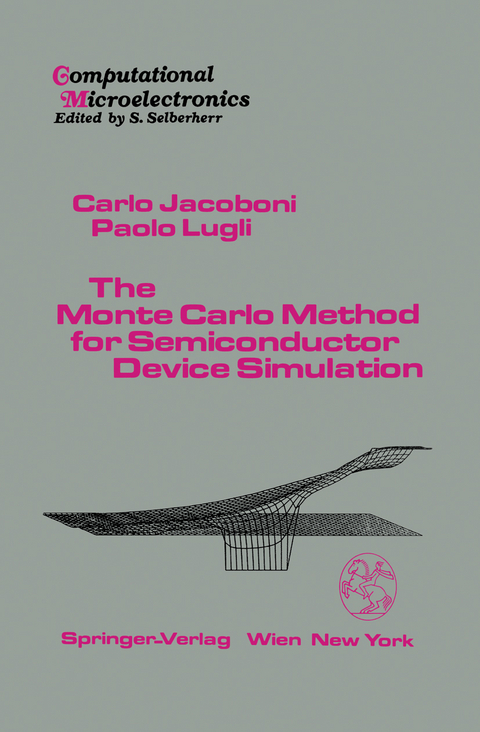
The Monte Carlo Method for Semiconductor Device Simulation
Springer Wien (Verlag)
978-3-211-82110-7 (ISBN)
1 Introduction.- References.- 2 Charge Transport in Semiconductors.- 2.1 Electron Dynamics.- 2.2 Energy Bands.- 2.3 Scattering Mechanisms.- 2.4 Scattering Probabilities.- 2.5 Transport Equation.- 2.6 Linear Response and the Relaxation Time Approximation.- 2.7 Diffusion, Noise, and Velocity Autocorrelation Function.- 2.8 Hot Electrons.- 2.9 Transient Transport.- 2.10 The Two-dimensional Electron Gas.- References.- 3 The Monte Carlo Simulation.- 3.1 Fundamentals.- 3.2 Definition of the Physical System.- 3.3 Initial Conditions.- 3.4 The Free Flight, Self Scattering.- 3.5 The Scattering Process.- 3.6 The Choice of the State After Scattering.- 3.7 Collection of Results for Steady-State Phenomena.- 3.8 The Ensemble Monte Carlo (EMC).- 3.9 Many Particle Effects.- 3.10 Monte Carlo Simulation of the 2DEG.- 3.11 Special Topics.- 3.12 Variance-reducing Techniques.- 3.13 Comparison with Other Techniques.- References.- 4 Review of Semiconductor Devices.- 4.1 Introduction.- 4.2 Historical Evolution of Semiconductor Devices.- 4.3 Physical Basis of Semiconductor Devices.- 4.4 Comparison of Semiconductor Devices.- References.- 5 Monte Carlo Simulation of Semiconductor Devices.- 5.1 Introduction.- 5.2 Geometry of the System.- 5.3 Particle-Mesh Force Calculation.- 5.4 Poisson Solver and Field Distribution.- 5.5 The Monte Carlo Simulation of Semiconductor Devices.- References.- 6 Applications.- 6.1 Introduction.- 6.2 Diodes.- 6.3 MESFET.- 6.4 HEMT and Heterojunction Real Space Transfer Devices.- 6.5 Bipolar Transistor.- 6.6 HBT.- 6.7 MOSFET and MISFET.- 6.8 Hot Electron Transistors.- 6.9 Permeable Base Transistor.- 6.10 Comparison with Traditional Simulators.- References.- Appendix A. Numerical Evaluation of Some Integrals of Interest.- References.- Appendix B. Generation of Random Numbers.- References.
| Erscheint lt. Verlag | 30.10.1989 |
|---|---|
| Reihe/Serie | Computational Microelectronics |
| Zusatzinfo | X, 359 p. |
| Verlagsort | Vienna |
| Sprache | englisch |
| Maße | 156 x 234 mm |
| Gewicht | 802 g |
| Themenwelt | Technik ► Elektrotechnik / Energietechnik |
| Schlagworte | field-effect transistor • Halbleiterelektronik • Heterojunction Bipolar Transistor • Integrated circuit • ion-sensitive field effect transistor • metal insulator semiconductur field-effect transis • metal insulator semiconductur field-effect transistor • metal oxide semiconductur field-effect transistor • metal semiconductor field-effect transistor • micro-alloy transistor, MAT • Monte-Carlo-Methode • Physics • Simulation • Transistor • Transport |
| ISBN-10 | 3-211-82110-4 / 3211821104 |
| ISBN-13 | 978-3-211-82110-7 / 9783211821107 |
| Zustand | Neuware |
| Haben Sie eine Frage zum Produkt? |
aus dem Bereich


